Environmental Integration Platform
An unwavering commitment, even as society changes.
Since its founding in 1927, ISHIMOTO has been involved in numerous architectural and urban development projects. During this time, society and the global environment have undergone significant changes, with the recent COVID-19 pandemic being one such example. Even in these times of rapid change, there is a core commitment that ISHIMOTO has always valued.
Michizō Tachihara is widely known as a poet, but he was also a promising architect. In 1937, after graduating from Tokyo Imperial University, he joined Ishimoto Architectural Office, where he was a senior to us. During his time at Tokyo Imperial University, Tachihara wrote ‘Small Reflections on Architectural Hygiene and Architectural Decoration Design,’ which was penned 80 years ago. In this document, he outlines the principles of architectural design that we, living in the present day, aspire to achieve̶truly embodying the concept of ‘Environmental Integration Platform.
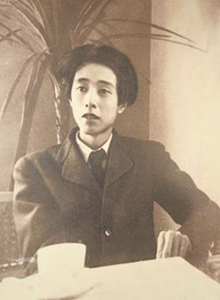
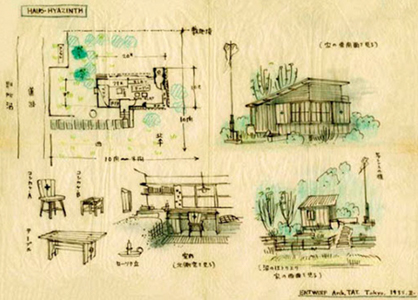
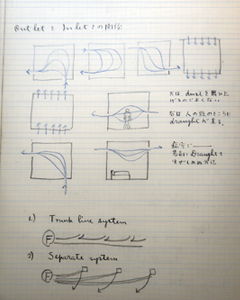
on architectural planning
(From the collection of the Shinano Design
Museum, Michizō Tachihara’s lecture notes)
Small Reflections on Architectural Hygiene and Architectural Decoration Design
By Michizō Tachihara
At the core of all architectural studies lies the belief that, as long as architecture deals with the
crucial aspect of human life̶namely, the issue of dwelling̶it must never become a mere
compilation of formulaic architectural structural studies. Rather than architectural structural
studies, it is in architectural planning where I find greater and deeper significance. Architectural
planning, which is the most rational pursuit of functionality and comfort, represents the foundation
of architectural studies.
Among its various disciplines, architectural hygiene occupies a particularly significant position in its
purest, most fundamental form within architectural planning. When architectural decoration, as a
subset of plastic arts, must collaborate with applied sciences due to its distinct functionalism, it is
these collaborators who must ensure its application.”

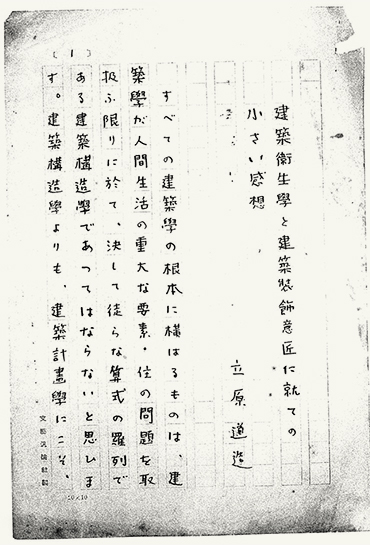
Architectural hygiene is at the core of architectural studies. Just as architectural planning starts
from the foundation of architectural hygiene, architectural decoration design also expands its
various forms based on it. The purity, calmness, and clarity found in many works of modern
architects are seen as the natural expression of the functional and comfortable conditions provided
by planning.
When we hear calls for the revival of decoration today, we must not forget that it must encompass
both the ‘aesthetic necessity’ and the ‘planning necessity.’ What comes to mind is the defeat of
‘aesthetic necessity’ in recent years, and what we fear is that, as a reaction to this, the revival of
decorative design may lead to the defeat of the ‘necessity of planning.’
However, this does not mean that I believe a new form of decorative design will emerge from a mere
compromise or fusion of hygiene and aesthetics.
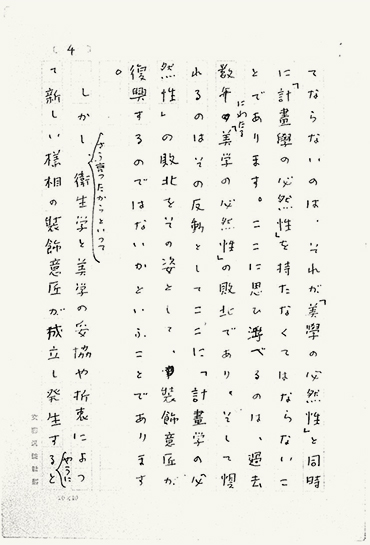
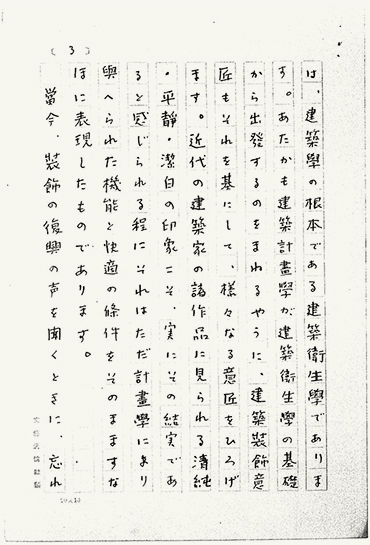
When pursuing both ‘the necessity of aesthetics’ and ‘the necessity of planning’ simultaneously, a
fundamental conflict is strongly imposed. It is the will to resist this intense opposition that
constitutes the honorable challenge given to architects from today onward. On the day when victory
is achieved, these two necessities will merge into a new singular necessity, illuminating the
fundamental aspects of decorative design with a brilliant appearance. In this era, all decorative
designers who fight should be inspired by this hopeful dialectic, and aspire to remain courageous
and valiant.
We no longer anticipate progress and contributions from the overabundance of formulaic
architectural structural studies. The modest achievements of the past are sufficient. Instead, a new
architectural structural science should, like all other architectural sciences, start from architectural
hygiene and planning studies.

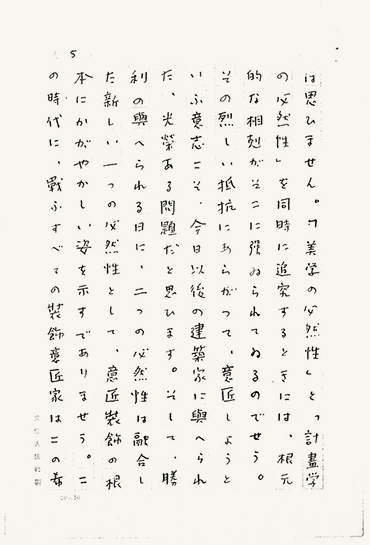
At that time, architectural structural science will also be able to truly collaborate with architectural design as a part of architecture.
What I have provided here is merely an abstract overview, without
any formal argument, and it consists only of reflections on the will towards a new architectural
design based on the fundamental principles of architectural hygiene.
However, while I have mentioned that it is based on hygiene, the specific form it should take is an
issue that will largely be addressed through practice in the future. This detail could not be covered
in this brief essay. In so-called new architectural designs that do not consider the revival of
decoration, solutions might be simpler. However, in the new classicism of today, which incorporates
the necessity of classical beauty, the integration with architectural hygiene is a truly interesting
practical issue.”


Inherited Sentiment
Structural engineering was making remarkable advancements, and architectural hygiene was merely
one aspect within architectural planning. However, this essay argues that, as long as architecture
deals with human habitation, architectural hygiene, which pursues functionality and comfort, is
crucial.
Today, architectural hygiene is known as architectural environmental engineering, which studies
environments such as heat, light, sound, and wind. The enduring sentiment passed down to us is to
demonstrate the ‘brilliant form’ where ‘architectural design,’ ‘environmental engineering,’ and
‘structural science’ are integrated.
Furthermore, the essay concludes with, ‘When pursuing both “the necessity of aesthetics” and “the
necessity of planning” simultaneously, a fundamental conflict is imposed. It is the will to resist this
intense opposition that constitutes the honorable challenge given to architects from today onward.
In response to this century-spanning challenge, we wish to practice the idea that ‘excellent
architecture is also an excellent environmental system.’ With unwavering commitment, we in the
ʻEnvironmental Integration Platformʼ will continue to move forward.
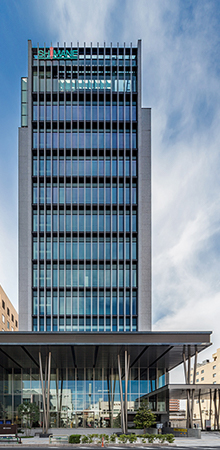
Bank Headoffice
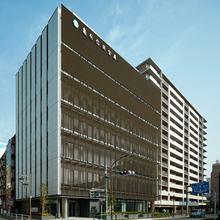
Shinkin Bank
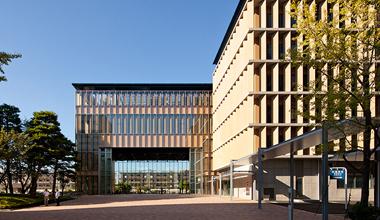
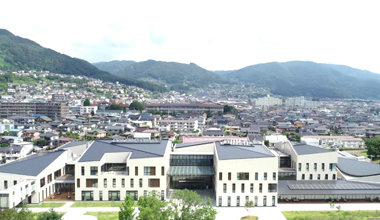
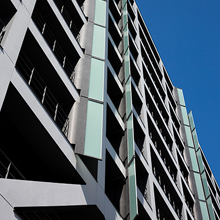
Nakano Community
Plaza
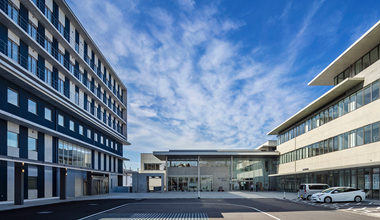
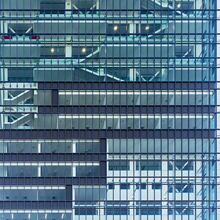
Campus Building

Headquarter
“MEDIA SHIP”
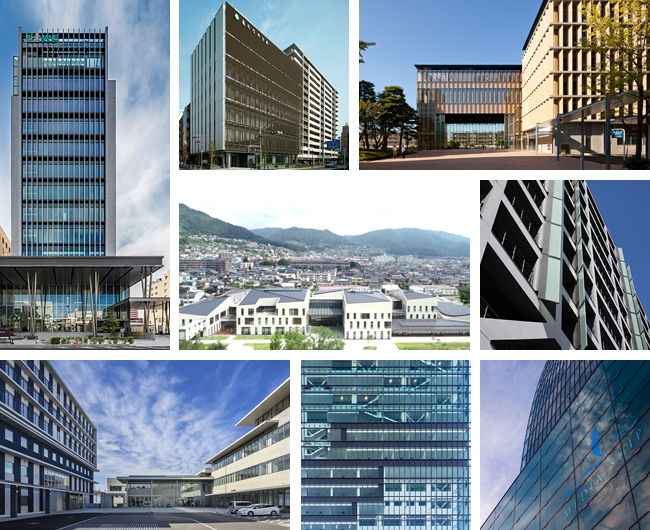
“Hyacinth House Sketch” ※1
refers to Michizō Tachihara’s conceptual sketch of his planned residence, the “Hyacinth House.” It
was an unfinished architectural project that reflected his poetic sensibilities in architectural design.
The Hyacinth House blended poetic elements with functional design, showcasing his unique
aesthetic vision.
